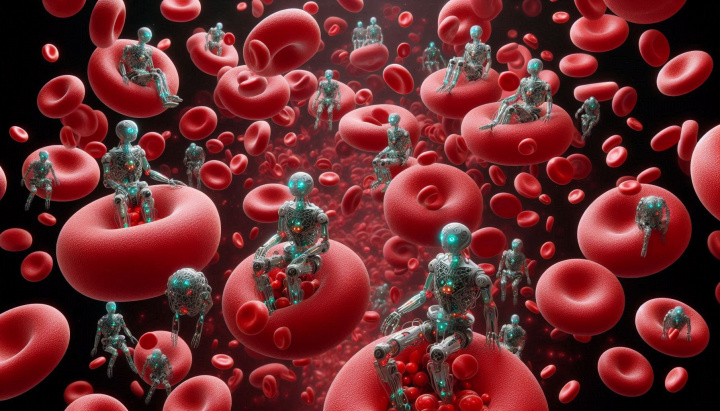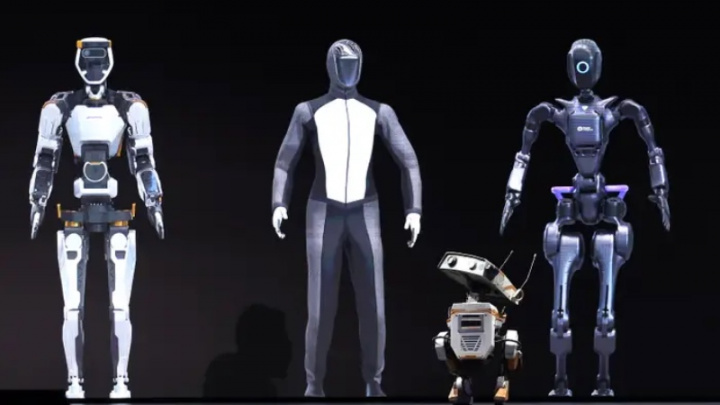Nanorobots for Treating Brain Aneurysms
The development of magnetic nanorobots could open new horizons in the treatment of brain aneurysms. These microscopic, precision devices are designed to deliver necessary medication directly to the site of the problem, potentially minimizing complications and the inherent risks of traditional surgical procedures. This article explores how these nanorobots work, their advantages over conventional methods, and the future possibilities within this cutting-edge field of nanomedicine.

A new chapter may be opening in the treatment of brain aneurysms, thanks to advancements in magnetic nanorobots. These tiny devices, measuring significantly smaller than a red blood cell, could revolutionize the management of this life-threatening condition. Nanorobots possess the potential to navigate through blood vessels with precision, delivering clot-promoting agents directly into aneurysms. This approach could offer a much safer and more precise alternative compared to traditional surgical and endovascular methods.
Nanorobot Design and Function
These nanorobots typically consist of a magnetic core, a payload of a clot-promoting agent (such as thrombin), and a special heat-sensitive coating designed to melt at a specific temperature. Measuring around 295 nanometers in diameter, they are considerably smaller than most bacteria. The nanorobots are injected into the bloodstream and then guided towards the aneurysm using external magnetic fields, often monitored by medical imaging techniques like ultrasound. Upon reaching the target aneurysm, the nanorobots are instructed to aggregate. An alternating magnetic field is then applied to heat them locally to approximately 50°C. This localized heating, which must be meticulously controlled to avoid thermal damage to surrounding healthy tissues, causes their coating to melt, releasing the clotting agent precisely where it's needed to initiate thrombosis within the aneurysm sac.
Targeted Drug Delivery
Targeted drug delivery using nanorobots aims for exceptional precision. For aneurysm treatment, potentially billions of these nanorobots are injected into the artery feeding the aneurysm. They are steered using magnetic fields and tracked with real-time imaging (e.g., ultrasound). This method allows physicians to potentially bypass the intricate and time-consuming manual navigation of catheters through the brain's complex vascular network, a process that can take hours during conventional endovascular procedures. Once the nanorobots reach their destination and cluster within the aneurysm, they release their payload, promoting clot formation to effectively seal off the aneurysm from blood circulation.
Advantages Over Traditional Methods
Nanorobot-based treatment offers several potential advantages over traditional aneurysm therapies, such as endovascular coiling or the placement of flow-diverting stents. It could reduce complications associated with implants, like coil compaction, incomplete occlusion, or stent-related thrombosis, which often necessitate long-term dual antiplatelet therapy. Consequently, the need for extended use of potent anticoagulant or antiplatelet drugs might be eliminated, avoiding their associated risks of systemic bleeding or gastrointestinal issues. The precision of nanorobots could also enable the treatment of larger or more complexly shaped aneurysms that are challenging to manage with current devices. Furthermore, this technology could significantly reduce the invasiveness of treatment, potentially leading to shorter procedure times, less trauma to the patient, and improved overall outcomes.
Research Directions and Future Prospects
Successful pre-clinical tests using magnetic nanorobots are ongoing in laboratory settings and small animal models, such as rabbits. These studies indicate that nanorobots can safely and effectively deliver therapeutic agents to targeted aneurysms with minimal leakage into the general circulation. However, significant further research is required. The technology needs validation in larger animal models (e.g., pigs or sheep) whose physiology more closely resembles humans. Key challenges include refining the magnetic guidance systems for precise navigation within the complex fluid dynamics of brain arteries, ensuring long-term biocompatibility and safety (addressing potential immunogenicity or toxicity), and scaling up manufacturing processes cost-effectively. Navigating the ethical considerations and complex regulatory pathways for such novel nanomedicine will also be crucial.
Despite these hurdles, the field of therapeutic nanorobotics is expected to see rapid advancements in the coming decade, potentially leading to human clinical trials. As the technology matures, it may find applications in other medical areas, such as targeted cancer therapy, dissolving blood clots in stroke, or performing other minimally invasive interventions deep within the body.





